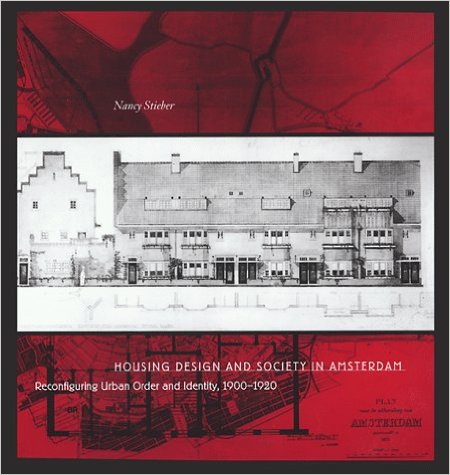Housing, Design and Society in Amsterdam

Een must over de achtergronden van de Amsterdamse School en de Amsterdamse stadspolitiek en maatschappij.
During the early 1900s, Amsterdam developed an international reputation as an urban mecca when invigorating reforms gave rise to new residential neighborhoods encircling the city's dispirited nineteenth-century districts. This new housing, built primarily with government subsidy, not only was affordable but also met rigorous standards of urban planning and architectural design. Nancy Stieber explores the social and political developments that fostered this innovation in public housing.
Drawing on government records, professional journals, and polemical writings, Stieber examines how government supported large-scale housing projects, how architects like Berlage redefined their role as architects in service to society, and how the housing occupants were affected by public debates about working-class life, the cultural value of housing, and the role of art in society.
Stieber emphasizes the tensions involved in making architectural design a social practice while she demonstrates the success of this collective enterprise in bringing about effective social policy and aesthetic progress. Het boek is integraal te lezen via Google books:
Een hele goede review door Pierre Yves Saunier vind je hier.
Gebruikte bronnen
Nancy Stieber, Housing, Design and Society in Amsterdam, Reconfiguring urban order and identity, 1900-1920 (University Press of Chicago, Chicago 1998), ISBN-13: 978-0226774176.
Links
https://books.google.nl/books?id=mac9vGpFMgsC&printsec=frontcover&hl=nl&source=gbs_ge_summary_r&cad=0#v=onepage&q&f=false
https://www.h-net.org/reviews/showrev.php?id=3061


